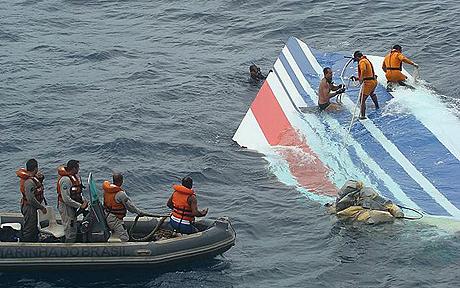
Search crews also recovered the vertical stabiliser from the tail section of the airliner, according to Air Force Col. Henry Munhoz, a spokesman for the Brazilian airforce.
The discoveries of debris and the bodies are all helping searchers narrow their hunt for the jet's black boxes, perhaps investigators' best hope of learning what happened to the flight. The data and voice recorders are located in the fuselage near the tail section of the jet.
William Waldock, who teaches air crash investigation at Embry-Riddle Aeronautical University in Prescott, Arizona, said that does not mean the black boxes will necessarily be located near where the debris was recovered, "but finding the tail narrows down the area even further."
Brazilian military officials have refused to detail the large pieces of the plane they have found. But a video on the Brazilian air force website entitled "Vertical Stabiliser Found" shows video of the piece - which keeps the plane's nose from swinging from side to side - being located and tethered to a ship.
The part had Air France's blue-and-red stripes, was still in its original triangular shape and was not visibly burned.
Mr Waldock - who examined the photos and video of the stabiliser and rudder - said the damage he saw looks like a lateral fracture.
"That would reinforce the idea that the plane broke up in flight," he said. "If it hits intact, everything shatters in tiny pieces."
No signs of burn marks on the stabiliser offered scant clues: Any explosion or fire in the fuselage would likely not make its way back to the tail section, according to Mr Waldock. Examining the fracture surfaces will also be key, he said, since it will indicate from what direction the force came that snapped the piece.
Investigators are also looking at the possibility that external speed monitors - called Pitot tubes - iced over and gave dangerously false readings to cockpit computers in a thunderstorm.
Peter Goelz, a former managing director of the National Transportation Safety Board, said the faulty airspeed readings and the fact the vertical stabiliser was sheared from the jet could be related.
The Airbus A330-200 has a "rudder limiter" which constricts how much the rudder - which is attached to the vertical stabilizer - can move at high speeds. If it were to move too far while travelling fast, it could shear off and take the vertical stabiliser with it.



Reader Comments
to our Newsletter